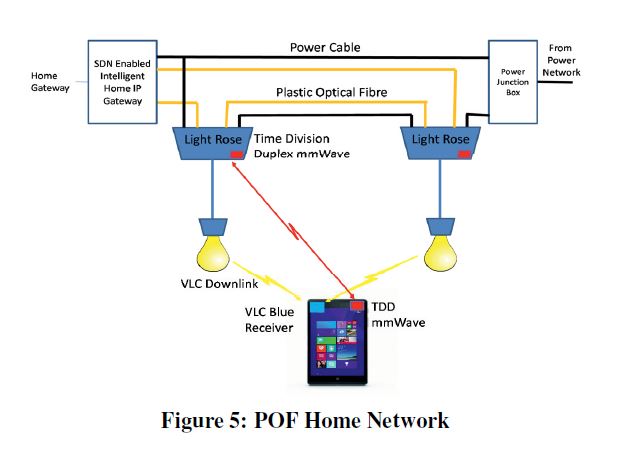Robots could perform life-saving operations remotely controlled by surgeons miles away in futuristic plans to build a next generation internet.
The Internet of Radio Light will switch up broadband connection speeds in buildings enormously and make logging on greener, clearer and safer. It could hit speeds 100 times faster than current Wi-Fi and use 10% of the energy.
The £7.8m 5G project will develop a hybrid ‘Li-Fi’ and ‘mm wave’ wireless network inside LED lights to reach incredible speeds, revolutionise internet use and modern life itself.
Electronics and software engineers at Brunel University London are driving the project’s design, to develop its nuts and bolts and help make it happen.
“It will allow surgeons to perform robotic surgery from a different hospital from where the patient is located,” said Professor John Cosmas.
“In general, it will enable the Internet of Control — remote control of machines and robots through the Internet. So far, this has not been possible because of large and variable latencies — delays through the existing Internet.”
“People will no longer need to travel as much, and will work from home more effectively, thereby reducing the use of fossil fuels for transport.”
The three-year project is forecast to offer 10 Gbits/sec wireless connections in homes and buildings with a delay of just a millisecond. The current 4G broadband mobile network gives 100 Mbits/sec with delays averaging between 90 and 110ms. And the average 2017 UK home fixed broadband network reaches 36.2 Mbits/sec with delays averaging 12–20 seconds, depending on providers.
Brunel will get £720,000 of the budget from Europe’s Horizon 2020 fund and joins 20 European, Israeli and Chinese teams with a hand in the project. Professor Cosmas’s team will develop and install a ‘remote radio-light head 5G’ demonstrator home hybrid Li-Fi /mm wave system and advise on systems in a Paris Museum, Musée de la Carte à Jouer, a Madrid underground station and a Chinese supermarket.

Both Wi-Fi and Li-Fi transmit data over the electromagnetic spectrum, but while Wi-Fi uses very high and ultra high frequency radio waves, The Internet of Radio Light project uses Li-Fi uses visible light. Visible Light Communication (VLC) works like an advanced Morse code – minutely modulating the LED’s brightness and can be adapted for other indoor environments such as Tube stations, airports, planes, trains, schools and hospitals.
Among its many plusses — 90% energy savings; pinpointing a user’s location within 10cm and added security because light and mm waves can’t pass through walls — Li-Fi cuts harmful electromagnetic exposure because it only transmits 2-3m, so needs less power. “There will be much less electromagnetic radiation within buildings,” said Professor Cosmas. “This could reduce the ill effects on humans and potentially lower incidence of tumours and leukaemia.”
Find out more about electronics and computer engineering at Brunel
Reported by:
Hayley Jarvis,
Media Relations
+44 (0)1895 268176
hayley.jarvis@brunel.ac.uk